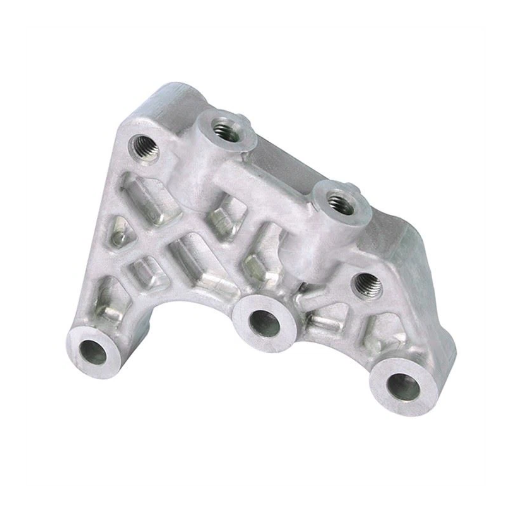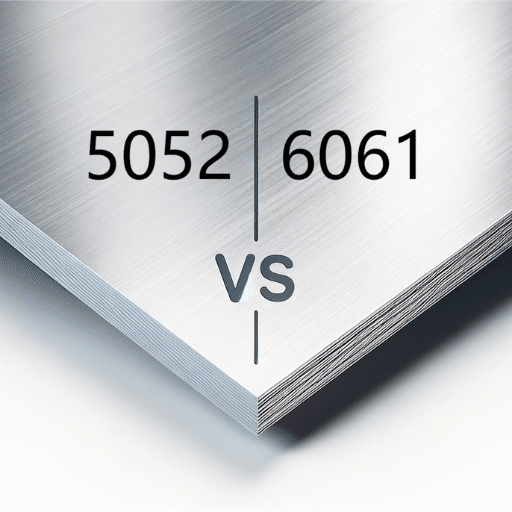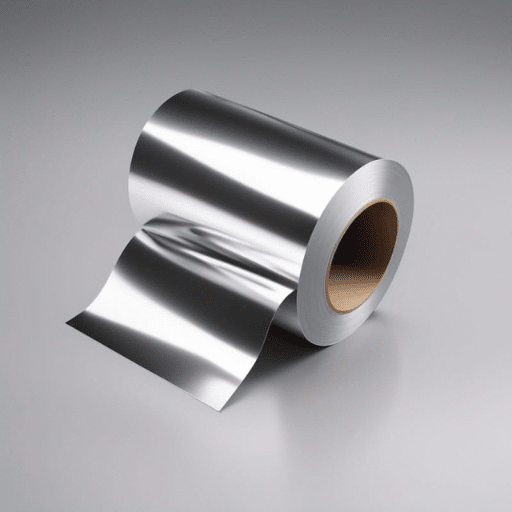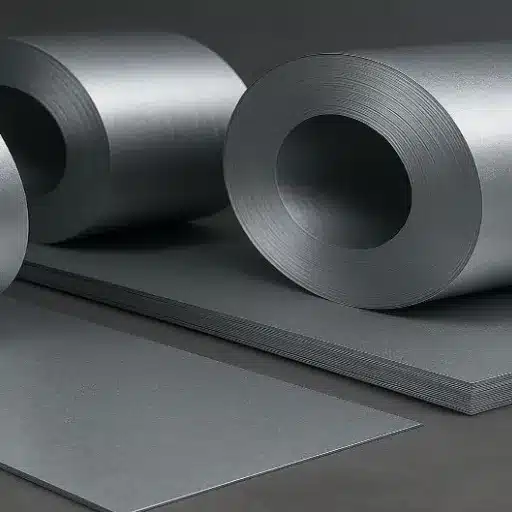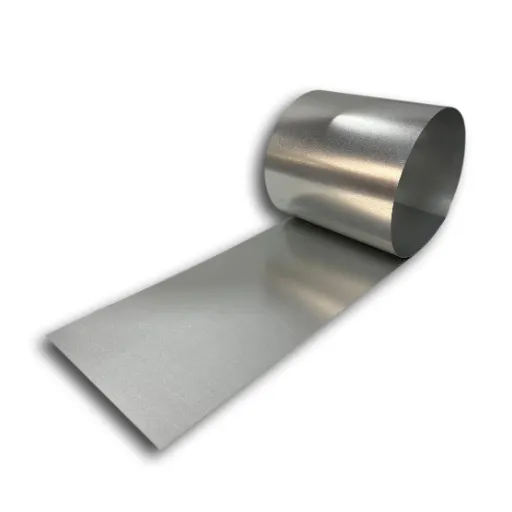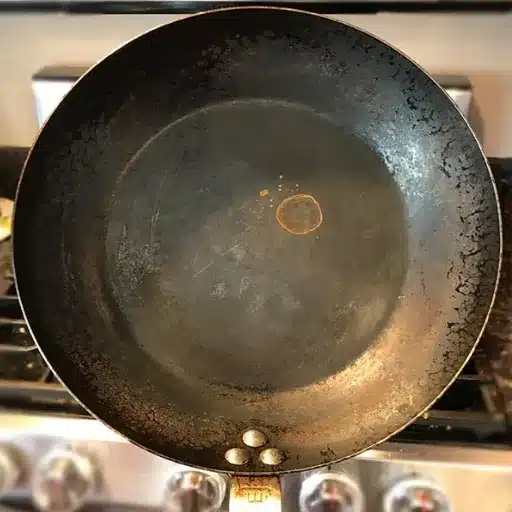Aluminum alloy sand castings play a crucial role across industries, offering a versatile and cost-effective solution for creating complex and durable components. At the heart of this manufacturing process is the QQ-A-601 standard—a critical specification that defines the requirements for aluminum alloy sand castings used in aerospace, defense, and other high-performance applications. This article will explore the intricacies of QQ-A-601, providing you with a comprehensive understanding of its guidelines, classifications, and practical implications. Whether you’re a manufacturer, engineer, or procurement professional, this resource will equip you with the technical knowledge needed to ensure compliance and optimize production quality.
Overview of QQ-A-601
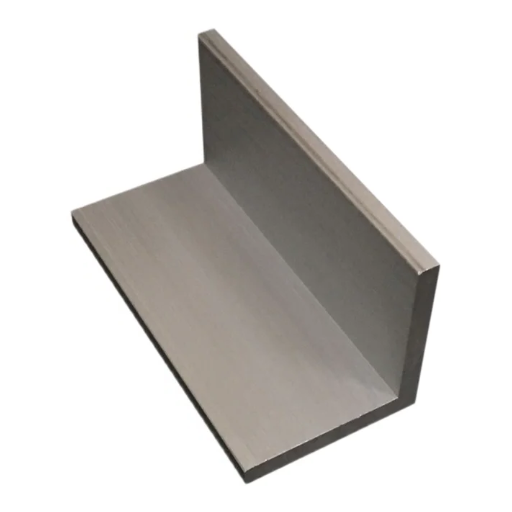
Introduction to QQ-A-601
Because of the high standard it sets on performance, people from aerospace, defense, and very specialized manufacturing industries widely accept it. The specification details material composition, casting methods, mechanical properties, and inspection criteria to ensure that only dependable and serviceable components are produced.
According to the intended use and mechanical properties requirements, the specification categorizes castings into Class 1 through Class 4. Class 1 castings are those used in high critical-load scenarios where utmost strength and reliability are required, and Class 4 castings have lesser mechanical performance requirements and are mainly used for non-critical purposes. The specifications deal with tensile strength, pressure-tightness, etc., to name but a few, which manufacturers must meet during production so that their application within the industry is valid.
The other provisions for compliance with QQ-A-601 include inspection and tests such as radiograph inspection, tensile testing, and other nondestructive test methods which are referred to under this specification. These methods detect internal defects, evaluate the material consistency, and finally ensure that the castings meet the set quality standards. Adherence to QQ-A-601 helps to ensure safety and performance while also contributing to reproducibility in highly critical applications by reducing failure and maintaining operational integrity.
Historical Context and Revisions
The QQ-A-601 specification was initially developed to standardize quality and performance for aluminum and aluminum alloy sand castings intended for aerospace and defense applications. The standard gained industry importance during World War II to maintain consistent material performance, in applications where structural integrity and reliability are critical. The implementation of the standard allowed the casting industry to keep pace with a growing demand for accuracy in casting procedures, where manufacturers were faced with ever-increasing safety demands.
QQ-A-601 has been constantly revised over the years to incorporate the latest technological developments and to align with changing industry requirements. Refurbished test methods, for example, with the addition of advanced non-destructive testing methods (NDT) and tighter dimensional accuracy tolerances, would be stated. These also refer to the composition of the materials used, which are fully compatible with today’s engineering practices and applications.
The recent revision focuses on concurrence with widely accepted quality systems, like ISO 9001, thus enabling the specification to be used worldwide. Contractor, as well as end-user comments, are taken into consideration, keeping a balancing act in addressing ever-changing demands without compromising the basic tenets of the specification. Such a versatile approach has kept QQ-A-601 as a prime reference for maintaining very high quality standards expected in aerospace and other critical industries.
Aluminum and Its Alloys

Properties of Aluminum
Aluminum is a light metal known for having a great strength-to-weight ratio and high resistance to corrosion and thermal conductivity. It poses a density of around 2.7 g/cm³, dating it to be about three times lighter than steel, determining its enormous occurrence in structures where lightness matters mime being aerospace and automotive design. Corrosion resistance is granted by the formation of a natural oxide layer on the aluminum surface, which can further be thickened with an anodizing treatment.
Aluminum thus has high thermal and electric conductivity: about 235 W/m·K for thermal conductivity and 37.7 MS/m (at 20°C) for electric conductivity, allowing it to work best in thermal systems such as heat exchangers and wiring. It is also ductile and malleable, meaning it can be worked easily into thin sheets or extruded into complex profiles without compromising the metal’s strength.
Another vital characteristic is that aluminum is entirely recyclable without suffering any degradation in properties for repeated use. Recycling requires only 5% of the energy in comparison to the production of primary aluminum, making it a real answer to environmental sustainability. The mechanical properties of these aluminum alloys can be improved by the addition of elements such as magnesium, silicon, or zinc as per the engineering requirements.
Types of Aluminum Alloys
Basically, aluminum alloys are categorized into two main types that include wrought and cast, further divided into heat-treatable and non-heat-treatable categories.
|
Type |
Sub-Type |
Key Elements |
Properties |
Applications |
|---|---|---|---|---|
|
Wrought |
Heat-Treatable |
Cu, Mg, Zn |
High strength |
Aerospace, auto |
|
|
Non-Heat-Treatable |
Mn, Mg |
Corrosion res. |
Marine, roofing |
|
Cast |
Heat-Treatable |
Si, Cu, Mg |
Moderate str. |
Engine parts |
|
|
Non-Heat-Treatable |
Si, Mg |
High ductility |
Cookware |
Applications of Aluminum Alloys in Various Industries
Aluminum alloys enjoy widespread applications in many industries due to their immaculate properties: strength-to-weight ratio, corrosion resistance, thermal and electrical conductivity, and ease of fabrication. Following are the main five industries where aluminum alloys play an important role:
- Aerospace Industry: Aluminum alloys of the 2xxx and 7xxx series are heavily used in aircraft structures and fuselage skins, and wing components; their lightweight contributes to fuel efficiency, while their strength ensures structural integrity under extreme stress and pressure. A substantial extent of a modern commercial aircraft like the Boeing 747- nearly 80% of its structural weight- is made up of aluminum alloys.
- Automobile Industry: Aluminum alloys are the materials of choice in automobile manufacturing when it comes to fuel efficiency and greenhouse gas emission reduction. Components like engine blocks, wheels, and body panels are mostly fabricated using 5xxx and 6xxx series aluminum alloys. The use of aluminum in automobiles results in a weight reduction of approximately 10-15%, thereby providing a saving on fuel of about 6-8% for each car.
- Construction Industry: In architecture, aluminum is preferred for high-rise construction, bridges, roofing, and window frames considering its outstanding corrosion resistance and attractiveness. Aluminum alloy panels find application in curtain wall systems and cladding as well. The 6xxx series alloys are popular due to their strength and corrosion resistance.
- Electronics and Electrical Industry: Considering its rather strong electrical conductivity, aluminum finds use in power lines, transformers, and electronic enclosures. Aluminum wiring, although not as good a conductor as copper, is lighter and cheaper and finds widespread use, particularly in high-voltage power grids throughout the world. These include alloys such as 1350 that are intended for electrical applications.
- Marine Industry: Aluminum-magnesium alloys (5xxx series) are mostly used in shipbuilding as they offer high corrosion resistance in marine salt environments. These alloys provide aluminum solutions for hulls, decks, and superstructures to ensure durability and low maintenance despite long exposure to harsh conditions.
The versatility and adaptability of aluminum alloys have established it as a driving technology-related material of the above industries, from sustaining them on the pathway of technologies to sustainability.
Sand Casting Process
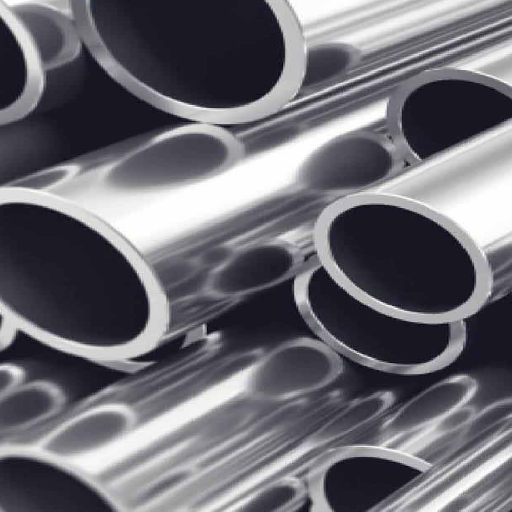
Introduction to Sand Casting
As one of the oldest and most diverse of all casting techniques, the process finds application in a multitude of industries, given an array of choices for metals and sometimes complicated shapes. In sand molding, sand is compacted around a pattern; molten metal is then poured into this mold cavity to form the casting. The casting process stands out because it can work with either ferrous or non-ferrous metals such as aluminum, cast iron, brass, or bronze.
The process of sand casting starts with making a pattern, which can be wood, plastic, or metal. The pattern enables the sand molding to take on the shape of the pattern. Typically, sand molds consist of silica sand combined with some binders like clay or synthetic resin to impart strength and precision to the mold. The sand casting tolerances can be as tight as ±0.008 inch on small castings, but much coarser on larger ones, depending on requirements. Furthermore, this method can provide for production runs of prototypes up to larger runs, hence cost-effective on smaller, difficult, or large parts.
The advent of simulation software and additive manufacturing has led to improvements in the sand casting process, enhancing dimensional accuracy of castings, well-optimized mold designs, and reduced lead time. For instance, 3D printing can be employed for direct mold fabrication, bypassing conventional patterns and allowing quick iterations. The process, in turn, allows for high material utilization, as sand is generally reclaimed and can be reused for further mold making; thus, the process contributes to sustainability.
Advantages of Sand Castings
- Cost-Effectiveness: This process is extremely cost-effective, especially in low-to-medium production volumes. Sand molds are cheaper to make, and raw materials used to prepare these molds, like sand and binder, are readily available and are cheap. Recycling sand can somewhat bring down the cost of materials.
- Material Versatility: Sand casting can cast almost any metal and alloy, ferrous or nonferrous. It essentially allows the casting of parts tailored with their mechanical and thermal properties to be, say, aluminum for lightweight applications or cast iron for high wear-resistant purposes.
- Complex Geometries: Sand casting can be deployed for producing complex designs and shapes, thereby being suitable for components with internal cavities, undercuts, or even interferences with fine details. Using expendable molds means that even the most difficult-to-cast designs can be realized without costly tooling changes.
- Scalability: Sand casting processes can be adjusted to the size of production, varying from single prototypes to large-scale manufacturing. Hence, due to the adjustment of its scale, it becomes perfect for both custom designs and mass production, serving a very wide array of industries.
- Size Range: One of the most important advantages is the ability of sand casting to produce parts of virtually any size. From tiny precision components weighing a few ounces to heavies over several tons, sand casting can cover an immense size range in terms of proper mold configuration and handling.
Common Techniques in Sand Casting
The sand casting process comprises several distinct techniques that provide more production efficiency, accuracy, and flexibility. Each method is selected based on production requirements, from surface finish to the complexity of the component.
- Green Sand Molding: The most common method makes use of a mixture of silica sand, clay, and water to form molds. Green sand has excellent moldability and is cheap, given its reusable nature. This is well-suited for medium to high-volume production runs but constrained by limited dimensional accuracy and surface finish.
- Dry Sand Molding: The mold in dry sand casting differs from green sand in that before the molten metal is poured in, the mold is baked or chemically dried. This hardens the mold, thereby improving dimensional accuracy and surface characteristics. Usually, large, complex castings having a relatively higher degree of detail are cast by this method.
- Shell Mold Casting: Using resin-coated sand, thin-walled molds are created which harden on exposure to heat. Shell mold casting offers very high dimensional tolerance and a smooth surface finish, making it ideal for precision components. The technique is widely used for producing automotive and aerospace parts in small sizes to medium.
- No-Bake Molding: It is commonly called air-set molding; this procedure uses a liquid chemical binder mixed with sand that hardens at ambient temperature, without baking, to form the mold. No-bake systems excel at producing mold strength and are best for casting large and heavy components with intricate details.
- CO₂ Sand Casting: Here, sodium silicate acts as the binding agent. Carbon dioxide gas is then passed to cure the mold. CO₂ sand casting is congruent for slightly fast mold-setting times and has the lowest impact on the environment, as the basic materials used can usually be reclaimed and reused.
- Investment in Additive Manufacturing for Mold Production: 3D printing technologies to produce sand molds and cores is another recent development. It paves the way for rapid prototyping, reduces arduous mold preparation work, and enables the making of elaborate geometries that are otherwise considered impossible via conventional methodology.
By utilizing these techniques, manufacturers can hence select the best possible sand casting method that fits perfectly into the demands of their particular projects, providing optimum accuracy and efficiency at low costs.
Military Applications of QQ-A-601
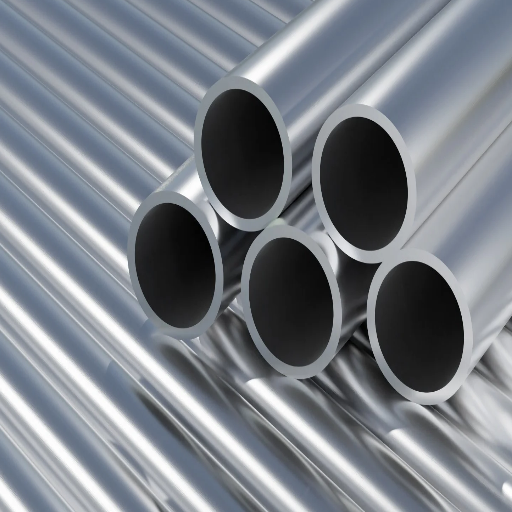
Significance in Military Manufacturing
From my perspective, the relevance of QQ-A-601 in military manufacturing is centered on the increased precision and reliability of aluminum castings. The specification demands that all cast aluminum products satisfy very high mechanical properties and quality standards so that they can be effectively used in the design of high-performance, robust military equipment. Manufacturing components that comply with the stringent mechanical properties and environmental requirements of QQ-A-601 yields components that can withstand harsh military environments and operational stresses.
QQ-A-601 further facilitates the production of lightweight yet sturdy components, arguably the most beneficial feature in military engineering concerning weight. A decrease in the weight of artworks would directly enhance the performance of vehicles, aircraft, and weaponry based on increased maneuverability, fuel efficiency, or payload capacity. Aluminum casting specified under QQ-A-601 thus dissociates military designs to extreme precision in terms of strength and weight, which basically is an avenue for maximized efficiencies on the battlefield.
Moreover, uniform compliance with QQ-A-601 shall buttress the capabilities of standardization and interoperability across disparate military systems and platforms. Reducing the variations in material performances via standardized procedures lowers the chance of failure in material-based components as well as the smooth integration of such components into otherwise complicated assemblies. By using QQ-A-601 as a basic standard, military producers can successfully target their goals and remain highly ready operationally.
Standards and Compliance in Military Use
Standards and compliance play an important role in ensuring the reliability, safety, and operational efficiency of military systems. Great focus is placed on ensuring that materials and components adhere to strict specifications, such that the harshness of military operations may be met and endured. Frameworks like MIL-STD and MIL-SPEC allow for a common approach, thereby reducing the variability in manufacturing output. These standards ensure resistance to corrosion, stability to thermal influences, and structural integrity so that they are ready for operations under different environmental conditions.
Up until recently, mandatory compliance monitoring systems were manual. An automated system checks the components against certain standards so as to ensure certification is done faster and to eliminate human errors. Stabilized composites and additive manufacturing products are some of the new materials being considered for special standardization treatment.
Modern military systems, by adequately conforming to set standards, are more interoperable with world allies to perform joint operations. This signifies the need for compliance frameworks to be continuously evolving alongside new technologies to ensure that they do not limit operational superiority and mission success.
Quality Assurance in Aluminum Alloy Sand Castings
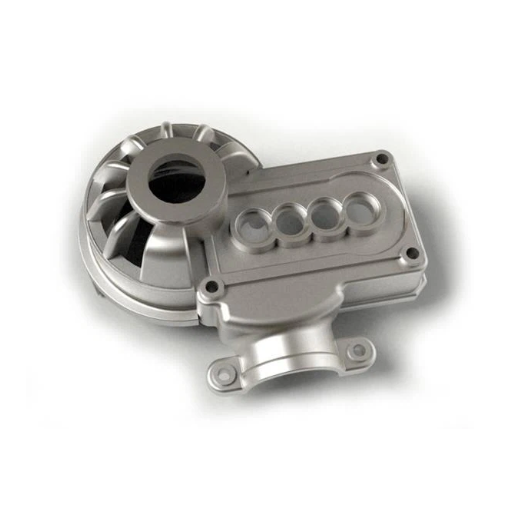
Testing and Inspection Procedures
Robust testing and inspection protocols are critical to ensuring the quality and reliability of aluminum alloy sand castings, especially for high-performance applications in aerospace, automotive, and defense industries. These procedures are intended to uncover metallurgical defects, dimensional deviations, and surface defects, while at the same time checking specifications for very stringent engineering considerations.
Non-destructive testing methods such as X-ray radiography and ultrasonics give a glimpse into the internal details of castings with no damage. Radiographic inspections are useful in spotting voids, porosity, or inclusions in the material; ultrasonic testing checkpoints for crack anomalies depending on the variation in sound wave propagation. Dye penetrant methods complement the aforesaid by checking surface defects that might be invisible to human senses.
Dimensional inspection by means of a coordinate measuring machine guarantees the exact geometrical measurements of the final product based on CAD drawings. Furthermore, spectroscopic methods such as OES (Optical Emission Spectrometry) or ICP (Inductively Coupled Plasma) tests are applied to confirm that the chemical composition of the alloy fits within the specified standards.
With such cutting-edge testing and inspections, aluminum alloy sand-casting manufacturers may always be confident to meet service requirements on high orders while minimizing the risk of failure.
Maintaining Standards in Production
The production processes imparting constant quality comprise a set of determined norms that must be respected on the one hand and the application of cutting-edge methods on the other hand. International standards such as 9001 of ISO for quality management systems or ASTM for materials set the framework within which to work to generally assure precision and consistency in manufacturing operations. Control over processes, such as through Statistical Process Control (SPC), controls in real-time the various parameters involved in production so as to maintain the variations within acceptable limits and prevent defects from occurring.
Standardization can be further cemented by embracing advanced technologies like automation and predictive analytics. Automation assures repeatability for complex tasks so long as human interventions do not contaminate its path, and analytics help immensely in pinpointing manufacturing trends and forecasting potential issues so that these may be addressed before negative downtime-striking consequences. This includes the ability to maintain a watchful eye on equipment performance continuously, thereby alerting when maintenance intervention is required, while simultaneously ruling out unplanned downtime and assuring the equipment stays within the design tolerance level.
The combination of a strong quality framework with tools and techniques at the cutting edge of new scopes is what allows manufacturers to accomplish maintenance of production standards, ensuring that the products conform to the stringent requirements imposed by regulatory agencies yet at the same time perform equal to, if not better, than customer expectations concerning reliability and operational performance.
References
-
Progress Report, Foundry Metallurgy Studies
- Source: A detailed report on foundry metallurgy, discussing the casting properties of QQ-A-601 aluminum alloy.
-
- Source: MFPT (Machinery Failure Prevention Technology), exploring the application of QQ-A-601 aluminum alloy in battlefield part replacements.
-
Advanced Continuous Duty Power Supply for Space Vehicles
- Source: ScienceDirect, describing the use of aluminum alloys conforming to QQ-A-601 specifications in space equipment.
Frequently Asked Questions (FAQ)
Q: What is QQ-A-601?
A: QQ-A-601 is a federal specification that outlines the requirements for aluminum sand castings. It provides guidelines for the manufacturing process, material properties, and testing methods to ensure quality and consistency in aluminum castings.
Q: What does the “rev” in QQ-A-601 rev signify?
A: The “rev” in QQ-A-601 rev signifies the revised version of the original specification. This revision includes updates and improvements made to the standards for aluminum sand castings, reflecting advancements in technology and manufacturing practices.
Q: Is QQ-A-601 still an active specification?
A: A: As of the latest updates, QQ-A-601 remains an active specification. However, it’s important to verify the current status of the specification as updates and revisions may occur periodically.
Q: What materials are covered under QQ-A-601?
A: QQ-A-601 primarily covers aluminum sand castings. The specification details the types of aluminum alloys that can be used, ensuring that the castings meet the required strength and durability.
Q: Can QQ-A-601 be used for military applications?
A: Yes, QQ-A-601 is applicable for military applications. The stringent guidelines ensure that aluminum sand castings can withstand the rigorous demands of military use, providing reliability and safety.
Q: What was the original version of QQ-A-601 released?
A: The original version of QQ-A-601 was released in 1981. Since then, the specification has undergone several revisions to improve and adapt to modern manufacturing needs and standards.
Q: Are there any cancellations related to QQ-A-601?
A: There have been no recent cancellations of QQ-A-601; however, specifications can be reviewed and updated as needed. It is advisable to check for any announcements regarding changes to the specification status.
Q: How can I access the latest version of QQ-A-601?
A: The latest version of QQ-A-601 can be accessed through official government websites or industry standards organizations that publish federal specifications. It is important to refer to the most current document for accurate information.

